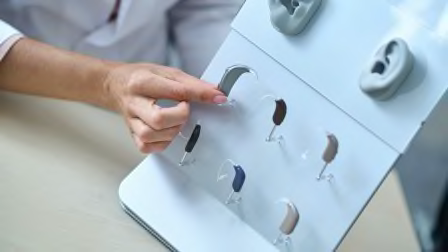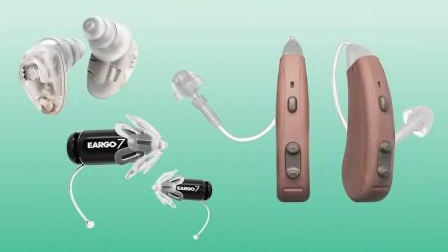What You Can Learn From Home Hearing Tests
What app-based and online tools can and can’t tell you

Hearing healthcare isn’t always easy to access. For instance, Medicare pays for a hearing exam only if you have a referral from a doctor. But a growing number of tests—in apps and online—are meant to help you check your hearing on your own.
Some use testing methods backed by solid science, says Nicholas Reed, AuD, an audiologist and assistant professor in the department of epidemiology at the Johns Hopkins Bloomberg School of Public Health in Baltimore, while others have little evidence to support them.
A key limitation of apps and online tests is that they can’t rule out potentially reversible causes of hearing loss, such as excess earwax, the way an audiologist would during an in-person test. “If you do a self-hearing screen, a person can’t look into their own ear,” says Yula Serpanos, PhD, a professor in the department of communication sciences and disorders at Adelphi University in Garden City, N.Y.
That said, an online test could potentially serve as a useful screening tool. If you want to try one, consider the following.
The Two Types of Home Hearing Tests
For most online and app-based tests you’ll be advised to wear headphones and sit in a quiet spot.
How to Find a Good Hearing Test
The experts we spoke with suggest looking for the following.
Validation: The word “validation” in the description suggests that a test has been scientifically evaluated for accuracy, Serpanos says. It’s even better if the description has a summary of (or links to) the validation studies. One such test is the World Health Organization’s HearWHO app.
Clear, thorough directions: Treat tests that provide scanty directions or explanation of their methods with caution, Reed says. A test should also monitor background noise and alert you if it’s too loud for an accurate result. For a pure-tone audiometry test, the instructions should tell you which type of headphones to use.
What to Do With Results of Your Hearing Test
If a reputable online hearing test tells you that you don’t have hearing loss and you don’t suspect you’re having trouble hearing, it’s a reasonably reliable result, Reed says. “Most good tests err on the side of caution,” he says, and are more likely to suggest you might have hearing loss when you really don’t.
If the test says you do have hearing loss, it’s best to think of that as a starting point, Serpanos says. You can take results to your doctor, an audiologist, or a licensed hearing-instrument specialist for further evaluation.
Editor’s Note: A version of this article also appeared in the July 2022 issue of Consumer Reports on Health.




















